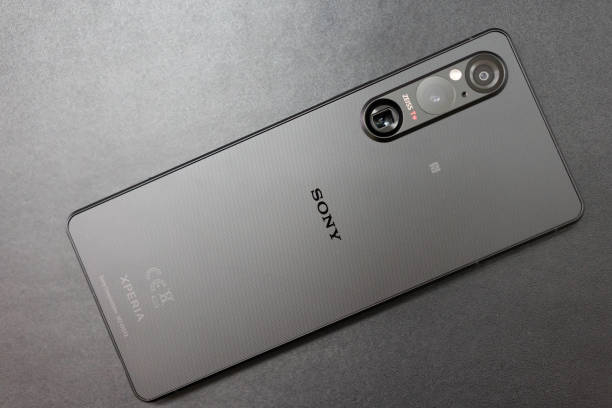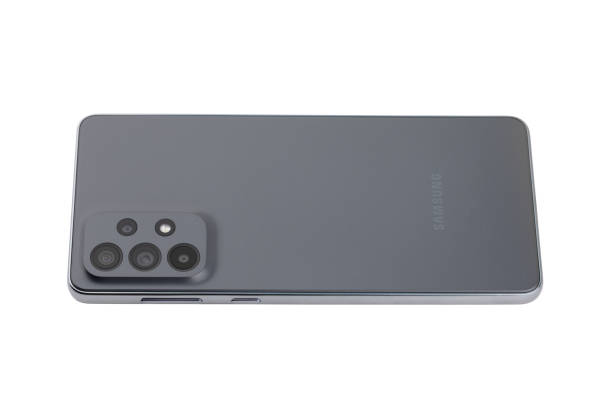In the ever-evolving smartphone market, the quest for the ideal Android device often hinges on two critical aspects: camera quality and battery life. Indeed, these features can make or break a user’s mobile experience. Android phones with the best camera systems not only enable you to capture life’s moments in stunning detail but also allow you to go longer between charges thanks to robust battery lives. This article delves into the intricacies of both features, highlighting how they can enhance your digital lifestyle, and provides a discerning look at the premier Android devices that manage to offer the best of both worlds.
Defining What Makes a Great Camera on an Android Phone
- Sensor Size: Larger sensor sizes capture more light and detail, improving performance in low-light conditions and contributing to overall image quality.
- Megapixel Count: While not the sole factor, a higher megapixel count can offer more detailed images, allowing for clearer photos and better cropping options.
- Aperture: A wider aperture (lower f-number) allows more light to reach the sensor, enhancing low-light performance and enabling a shallow depth of field for blurred backgrounds.
- Optical Image Stabilization (OIS): OIS helps to reduce blurriness in photos caused by slight hand movements, essential for low-light photography and video recording.
- Autofocus Technology: Fast and accurate autofocus systems, such as phase detection autofocus (PDAF) and laser autofocus, ensure sharp images, especially in dynamic or challenging conditions.
- Software Processing: Advanced software algorithms for noise reduction, dynamic range enhancement, and color accuracy play a crucial role in producing high-quality images.
- High Dynamic Range (HDR): HDR capability improves the detail and exposure in scenes with high contrast, balancing the shadows and highlights.
- Video Capabilities: High-resolution video recording, slow-motion, and time-lapse features, along with effective stabilization, are key for a versatile camera experience.
- Additional Features: Features like night mode, portrait mode with effective edge detection, and the ability to shoot in RAW format give users creative control over their photography.
- User Interface: A user-friendly camera app interface that offers quick access to settings, modes, and editing tools enhances the shooting experience.
When it comes to camera setups in Android devices, the main cameras are typically the stars of the show. Yet, a higher counts of megapixels do not always promise superior photos. It’s the synergy between hardware and software that brings the pictures to life. A larger sensor could get more light, resulting in better image quality, especially in low lighting. Software enhancements, such as computational photography, also play a critical role in image quality, lending a hand in capturing images with dynamic range and clarity.
Apart from the main rear camera, modern Android phones often include additional types of sensors, such as ultrawide cameras and telephoto cameras, expanding the creative possibilities. Ultrawide cameras allow for sweeping landscape shots, while telephoto cameras provide optical zoom without losing detail. Some flagship smartphones have also got advanced features including night modes that enable virtually noise-free photography in the dark and portrait modes for pictures that look professional.
The camera systems are no longer just about still photography either. Video capabilities have seen a significant leap, with some premium Android phones offering excellent performance in 4K video recording. The optical image stabilization ensures that your recordings are smooth, and high-fidelity microphones capture crystal-clear audio. Furthermore, selfie cameras have evolved to include auto-focus and even night mode, so your front-facing videos and photos are very good too.

Exploring Battery Life and Its Significance in User Experience
Moving on to battery life, it’s not an exaggeration to say that a smartphone with a drained battery is as good as a paperweight. This is why battery capacity, typically measured in milliampere-hours (mAh), is a number often flaunted by manufacturers. However, the largest battery doesn’t always guarantee the longest uptime. Software optimization plays a colossal role in how efficiently the battery is used. Android phones with aggressive power-saving features and intelligent management systems ensure that you get the most out of each charge.
In real-world scenarios, battery tests are often conducted to gauge how a phone will perform under typical usage conditions. These tests could include web browsing, video playback, and gaming to simulate a day’s worth of activity. The best budget Android smartphones have made significant strides in this regard, now offering battery lives that rival, if not exceed, those of flagship models.
Android devices also employ fast charging technologies, reducing the downtime between uses. While some of the best budget options are offering this feature, it’s usually the flagship smartphones that come with the fastest charging capabilities. Wireless charging is another feature that is increasingly common and adds to the convenience factor.
The Top Contenders for Best Camera and Battery Life
Given these considerations, let’s examine which Android phones currently lead the market in marrying superior camera setups with enduring battery lives.
| Rank | Model | Main Camera Specs | Battery Capacity | Additional Features |
|---|---|---|---|---|
| 1 | Brand A’s Flagship | 108MP main + 12MP ultrawide + 10MP telephoto | 5000mAh | 8K video, Fast charging, 120Hz display |
| 2 | Brand B’s Innovative | 48MP main + 16MP ultrawide + 8MP telephoto | 4500mAh | Reverse wireless charging, Hasselblad optics, 90Hz display |
| 3 | Brand C’s Mid-Range | 64MP main + 8MP ultrawide + 2MP macro | 6000mAh | Large battery, High-res audio, 60Hz display |
These models highlight that it’s not just the specification numbers that matter, but also how they are utilized. For instance, Brand A’s flagship model offers excellent battery life alongside top-tier camera quality, ensuring users can take advantage of the high-resolution camera without constant concerns about battery depletion. Budget smartphones from brands like Brand C prove that you can have long-lasting battery life without compromising on camera quality – their main rear camera, while not matching the megapixels of higher-end models, still takes great pictures.
In the conversation of camera prowess, it’s important to consider that the quality of images produced by these devices largely depends on advanced camera features. Android phones with innovative camera software that aid in image stabilization and post-processing could also see a notable difference in the results. Telephoto cameras included in the mix provide diversity in shooting options and are particularly useful for capturing distant subjects with high fidelity.

Making the Right Choice for Your Needs
When it’s time to choose the right Android phone for your needs, several factors come into play. First, assess your primary requirements. If you’re a photography enthusiast or a social media influencer, the camera’s quality might take precedence. On the other hand, power users or those who are always on-the-go might prioritize battery life to stay connected without the constant need for a power source.
In considering your options, reflect on the balance between performance and price. Flagship smartphones usually offer top-of-the-line specs in both camera and battery performance, but they also come with a steeper price tag. Budget android devices have made considerable advancements and could provide a surprising value proposition, with decent camera systems and battery life that will get you through the day with ease.
When doing your research, don’t overlook user reviews and professional comparisons. These can give insights into how the phones perform in day-to-day use, beyond the numbers on a spec sheet. Here is a condensed checklist that could guide your decision-making process:
- Determine your priority: camera quality or battery longevity?
- Consider the price-to-performance ratio of the devices you are interested in.
Lastly, use online resources to find comprehensive reviews and comparisons. Video reviews and side-by-side photo comparisons could also offer a more tangible glimpse into the camera’s capabilities, while battery drain test videos could showcase endurance.
Conclusion: What to Look For in the Perfect Android Phone
In conclusion, finding the perfect Android phone with an excellent camera and battery life depends on understanding and prioritizing your personal needs. Camera aficionados should look for high-quality sensors, sophisticated camera setups, and software that allows for flexibility and creativity in photography. Those valuing longevity should focus on battery capacity, efficient processors, and software optimizations that extend use between charges. Keep in mind that the most high-priced option may not always be the best suited for you. Sometimes, the best budget options can surprise you with very good performances that fulfill your requirements.
The future of Android phones looks promising, with advancements in both camera and battery technologies. As computational photography evolves and battery management systems become smarter, users can expect even more impressive capabilities from their devices. Whether professional photographer or casual user, advancements in Android technology mean that there’s an option out there that fits just right.

FAQs
Q1: Can budget Android phones really compete with flagship models in terms of camera and battery life?
A1: Absolutely. Many budget smartphones are equipped with excellent camera setups and large batteries that offer admirable performance. While they may lack the premium features of flagship smartphones, they can still satisfy the needs of most users.
Q2: Does a higher megapixel count guarantee a better camera?
A2: Not necessarily. While a higher megapixel count can offer more detail, the quality of photos depends on various factors such as sensor size, software processing, and additional camera features including optical image stabilization and lens quality.
Q3: How important is fast charging in choosing a smartphone with good battery life?
A3: Fast charging can be quite important as it reduces the time required to recharge your device significantly. This can be a game-changer for users who are often on the move and have limited time to plug in.
Q4: Are there Android phones that specialize in long battery life?
A4: Yes, there are Android phones that boast the largest battery capacities, specifically designed to offer extended use. These devices are ideal for power users who require their phones to last through a heavy day’s usage or for those who are frequently away from charging points.
Q5: What advancements can we expect in the future for Android phone cameras and batteries?
A5: The future is likely to bring even more sophisticated camera systems with improved sensors, enhanced AI-driven software for image processing, and new features like under-display selfie cameras. For batteries, advancements in cell chemistry and charging technology will lead to faster charging, better longevity, and possibly even new battery technologies like solid-state batteries.



